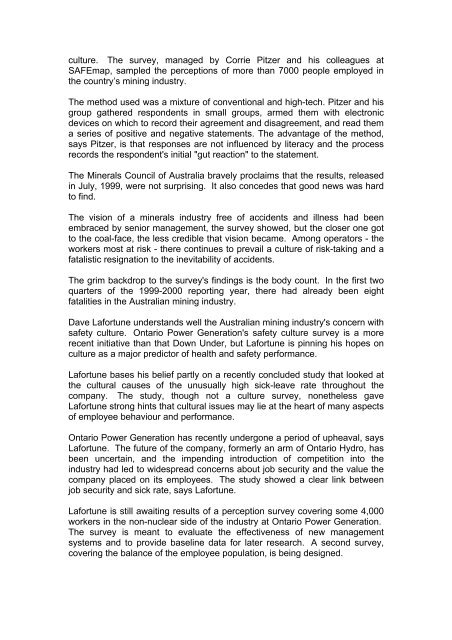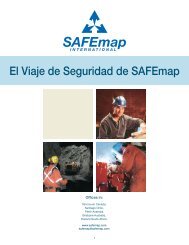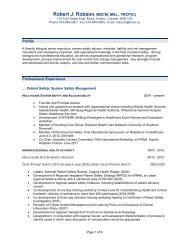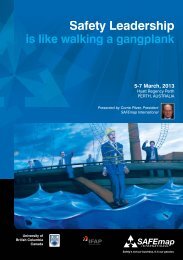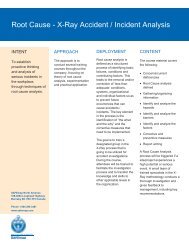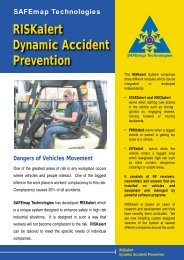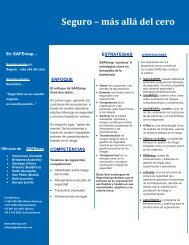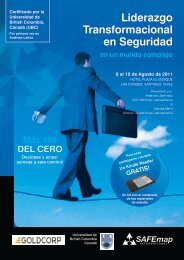A Matter of Perception - SAFEmap International
A Matter of Perception - SAFEmap International
A Matter of Perception - SAFEmap International
Create successful ePaper yourself
Turn your PDF publications into a flip-book with our unique Google optimized e-Paper software.
culture. The survey, managed by Corrie Pitzer and his colleagues at<strong>SAFEmap</strong>, sampled the perceptions <strong>of</strong> more than 7000 people employed inthe country’s mining industry.The method used was a mixture <strong>of</strong> conventional and high-tech. Pitzer and hisgroup gathered respondents in small groups, armed them with electronicdevices on which to record their agreement and disagreement, and read thema series <strong>of</strong> positive and negative statements. The advantage <strong>of</strong> the method,says Pitzer, is that responses are not influenced by literacy and the processrecords the respondent's initial "gut reaction" to the statement.The Minerals Council <strong>of</strong> Australia bravely proclaims that the results, releasedin July, 1999, were not surprising. It also concedes that good news was hardto find.The vision <strong>of</strong> a minerals industry free <strong>of</strong> accidents and illness had beenembraced by senior management, the survey showed, but the closer one gotto the coal-face, the less credible that vision became. Among operators - theworkers most at risk - there continues to prevail a culture <strong>of</strong> risk-taking and afatalistic resignation to the inevitability <strong>of</strong> accidents.The grim backdrop to the survey's findings is the body count. In the first twoquarters <strong>of</strong> the 1999-2000 reporting year, there had already been eightfatalities in the Australian mining industry.Dave Lafortune understands well the Australian mining industry's concern withsafety culture. Ontario Power Generation's safety culture survey is a morerecent initiative than that Down Under, but Lafortune is pinning his hopes onculture as a major predictor <strong>of</strong> health and safety performance.Lafortune bases his belief partly on a recently concluded study that looked atthe cultural causes <strong>of</strong> the unusually high sick-leave rate throughout thecompany. The study, though not a culture survey, nonetheless gaveLafortune strong hints that cultural issues may lie at the heart <strong>of</strong> many aspects<strong>of</strong> employee behaviour and performance.Ontario Power Generation has recently undergone a period <strong>of</strong> upheaval, saysLafortune. The future <strong>of</strong> the company, formerly an arm <strong>of</strong> Ontario Hydro, hasbeen uncertain, and the impending introduction <strong>of</strong> competition into theindustry had led to widespread concerns about job security and the value thecompany placed on its employees. The study showed a clear link betweenjob security and sick rate, says Lafortune.Lafortune is still awaiting results <strong>of</strong> a perception survey covering some 4,000workers in the non-nuclear side <strong>of</strong> the industry at Ontario Power Generation.The survey is meant to evaluate the effectiveness <strong>of</strong> new managementsystems and to provide baseline data for later research. A second survey,covering the balance <strong>of</strong> the employee population, is being designed.


